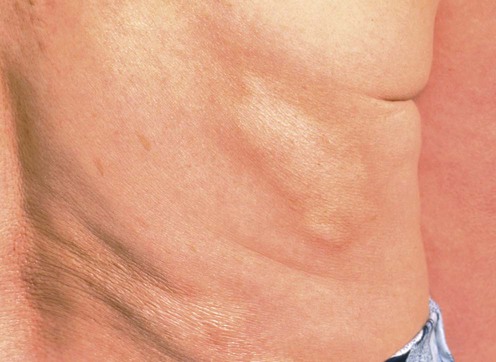The initial evaluation of patients with morphea should involve: Active morphea lesions should be treated as the lesions are frequently symptomatic and can produce permanent cosmetic and functional sequelae. Initial evaluation should be focused on determining the extent, severity, and activity of morphea lesions laying the groundwork for rational therapeutic choices. Arkachaisri T, Vilaiyuk S, Torok KS, Medsger TA Jr. Rheumatology (Oxford) 2010; 49: 373–81.
Morphea

Management strategy
Initial evaluation
 Questions regarding recent development of new lesions/extension of existing lesions to determine level of activity
Questions regarding recent development of new lesions/extension of existing lesions to determine level of activity
 Symptoms (pain/itch) associated with activity, musculoskeletal complaints, eye complaints (especially en coup de sabre/hemifacial atrophy)
Symptoms (pain/itch) associated with activity, musculoskeletal complaints, eye complaints (especially en coup de sabre/hemifacial atrophy)
 Total body examination of the skin (patients frequently do not appreciate the extent of lesions) looking for active/inactive lesions
Total body examination of the skin (patients frequently do not appreciate the extent of lesions) looking for active/inactive lesions
 Palpation of affected areas for depth of sclerosis
Palpation of affected areas for depth of sclerosis
 Examination for limited range of motion, contracture, limb length discrepancy, and evidence of musculoskeletal involvement
Examination for limited range of motion, contracture, limb length discrepancy, and evidence of musculoskeletal involvement
 Imaging with MRI if musculoskeletal involvement is suspected.
Imaging with MRI if musculoskeletal involvement is suspected.
Specific investigations
Development and initial validation of the localized scleroderma skin damage index and physician global assessment of disease damage: a proof-of-concept study.
![]()
Stay updated, free articles. Join our Telegram channel

Full access? Get Clinical Tree










